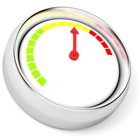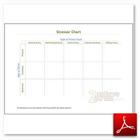Anxiety Attack Symptoms
Anxiety attacks and anxiety attack symptoms are different than the general anxiety symptoms in the sense that an anxiety attack (also known as a panic attack) is much more sudden and potentially more severe than the "normal" anxiety.
I created this section to clarify what one should look out for when trying to assess (measure) anxiety. A common mistake is to try and gauge and reason about anxiety during or on the basis of an attack. The problem is that we are not generally able to perform any reasoning based on a panic attack - very often, a person suffering from an anxiety attack or even just acute stress disorder need outside help to relieve the situation and "regain consciousness".
This is because an attack of anxiety - when the fear consumes the entire body and the nervous system is in overdrive - is so overwhelming that even basic functioning becomes exceedingly difficult.
Some call it simply a short, sudden state of shock ... but it is by definition way more severe!
Common Anxiety Attack Symptoms
To know and recognize it; look for these symptoms:- Sudden severe chest pain and muscle pain
- Spasms
- Sudden cold sweat
- Dilated pupils
- Rapid heartbeat and high blood pressure
- Dizziness and delusions
I you ever see another person having an attack, move quickly to get the person out of potential danger. If the person is unwilling don't leave him/her but try and calm the person down and assure him that he is in good hands. Call 911 and explain the situation. Ask the person if he /she is taking any medication and report that to the operator.
The event can be very scary also for bystanders - to step up and help takes courage. If you know the symptoms you are more ready to help and be helped if it happens to you.
Go from Anxiety Attack Symptoms to Anxiety Treatment.

